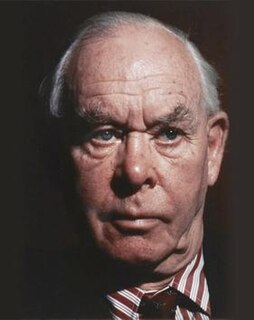Strictly speaking, psychology of religion consists of the application of psychological methods and interpretive frameworks to the diverse contents of religious traditions as well as to both religious and irreligious individuals. The extraordinary range of methods and frameworks can be helpfully summed up regarding the classic distinction between the natural-scientific and human-scientific approaches: the first cluster proceeds by means of objective, quantitative, and preferably experimental procedures for testing hypotheses regarding the causal connections among the objects of one's study. In contrast, the human-scientific approach accesses the human world of experience using qualitative, phenomenological, and interpretive methods, with the goal of discerning meaningful rather than causal connections among the phenomena one seeks to understand.
Attachment disorder is a broad term intended to describe disorders of mood, behavior, and social relationships arising from a failure to form normal attachments to primary care giving figures in early childhood. Such a failure would result from unusual early experiences of neglect, abuse, abrupt separation from caregivers between 6 months and three years of age, frequent change or excessive numbers of caregivers, or lack of caregiver responsiveness to child communicative efforts resulting in a lack of basic trust. A person's attachment style is permanently established before the age of three. A problematic history of social relationships occurring after about age three may be distressing to a child, but does not result in attachment disorder.

Gratitude, thankfulness, or gratefulness, from the Latin word gratus ‘pleasing, thankful’, is a feeling of appreciation felt by and/or similar positive response shown by the recipient of kindness, gifts, help, favors, or other types of generosity, towards the giver of such gifts.
Mary Dinsmore Ainsworth was an American-Canadian developmental psychologist known for her work in the development of the attachment theory. She designed the strange situation procedure to observe early emotional attachment between a child and its primary caregiver.
In psychology, an affectional bond is a type of attachment behavior one individual has for another individual, typically a caregiver for her or his child, in which the two partners tend to remain in proximity to one another. The term was coined and subsequently developed over the course of four decades, from the early 1940s to the late 1970s, by psychologist John Bowlby in his work on attachment theory. The core of the term affectional bond, according to Bowlby, is the attraction one individual has for another individual. The central features of the concept of affectional bonding can be traced to Bowlby's 1958 paper, "The Nature of the Child's Tie to his Mother".

Attachment in children is "a biological instinct in which proximity to an attachment figure is sought when the child senses or perceives threat or discomfort. Attachment behaviour anticipates a response by the attachment figure which will remove threat or discomfort". Attachment also describes the function of availability, which is the degree to which the authoritative figure is responsive to the child's needs and shares communication with them. Childhood attachment can define characteristics that will shape the child's sense of self, their forms of emotion-regulation, and how they carry out relationships with others. Attachment is found in all mammals to some degree, especially nonhuman primates.
In psychology, the theory of attachment can be applied to adult relationships including friendships, emotional affairs, adult romantic or platonic relationships and in some cases relationships with inanimate objects. Attachment theory, initially studied in the 1960s and 1970s primarily in the context of children and parents, was extended to adult relationships in the late 1980s.
Attachment measures refer to the various procedures used to assess attachment in children and adults.
Cupboard love is a popular learning theory of the 1950s and 1960s based on the research of Sigmund Freud, Anna Freud, Melanie Klein and Mary Ainsworth. Rooted in psychoanalysis, the theory speculates that attachment develops in the early stages of infancy. This process involves the mother satisfying her infant's instinctual needs, exclusively. Cupboard love theorists conclude that during infancy, our primary drive is food which leads to a secondary drive for attachment.

The term maternal deprivation is a scientific term summarising the early work of psychiatrist and psychoanalyst, John Bowlby on the effects of separating infants and young children from their mother although the effect of loss of the mother on the developing child had been considered earlier by Freud and other theorists. Bowlby's work on delinquent and affectionless children and the effects of hospital and institutional care led to his being commissioned to write the World Health Organization's report on the mental health of homeless children in post-war Europe whilst he was head of the Department for Children and Parents at the Tavistock Clinic in London after World War II. The result was the monograph Maternal Care and Mental Health published in 1951, which sets out the maternal deprivation hypothesis.
The evolutionary psychology of religion is the study of religious belief using evolutionary psychology principles. It is one approach to the psychology of religion. As with all other organs and organ functions, the brain's functional structure is argued to have a genetic basis, and is therefore subject to the effects of natural selection and evolution. Evolutionary psychologists seek to understand cognitive processes, religion in this case, by understanding the survival and reproductive functions they might serve.

Attachment theory, originating in the work of John Bowlby, is a psychological, evolutionary and ethological theory that provides a descriptive and explanatory framework for understanding interpersonal relationships between human beings.
Mary Main is an American psychologist notable for her work in the field of attachment. A Professor at the University of California Berkeley, Main is particularly known for her introduction of the 'disorganized' infant attachment classification and for development of the Adult Attachment Interview and coding system for assessing states of mind regarding attachment. This work has been described as 'revolutionary' and Main has been described as having 'unprecedented resonance and influence' in the field of psychology.
Secure attachment is classified by children who show some distress when their caregiver leaves but are able to compose themselves knowing that their caregiver will return. Children with secure attachment feel protected by their caregivers, and they know that they can depend on them to return. John Bowlby and Mary Ainsworth developed a theory known as attachment theory after inadvertently studying children who were patients in a hospital at which they were working. Attachment theory explains how the parent-child relationship emerges and provides influence on subsequent behaviors and relationships. Stemming from this theory, there are four main types of attachment: secure attachment, ambivalent attachment, avoidant attachment and disorganized attachment.
Most scientists agree that religiosity is not an independent personality trait, but something that can have the effect of personality traits. Viewing religiosity through the lenses of differing personality characteristics provides a relatively empirical way to study a difficult concept. Over time, the act of being religious has been a consistent behavior across almost every culture, and thus provides evidence that our personality can help explain the seeming predisposition of religious people.
There are multiple consequences of different attachment patterns that are formed in childhood development. This article will explore the way attachment patterns are formed, how parents pass on their attachment styles, long-term consequences of attachment patterns, and cross cultural attachment patterns.
Attachment and Health is psychological model which considers how attachment theory pertains to people’s preferences and expectations for the proximity of others when faced with stress, threat, danger or pain. In 1982 the American Psychiatrist, Lawrence Kolb, noticed that patients with chronic pain displayed behaviours with their healthcare providers akin to what children might display with an attachment figure, thus marking one of the first applications of attachment theory to physical health. Development of adult attachment theory and adult attachment measures in the 1990s provided researchers with the means to apply attachment theory to health in a more systematic way. Since that time it has been used to understand variation in stress response, health outcomes and health behaviour. Ultimately, the application of attachment theory to health care may enable health care practitioners to provide more personalized medicine by creating a deeper understanding of patient distress and allowing clinicians to better meet their needs and expectations.
Internal working model of attachment is a psychological approach that attempts to describe the development of mental representations, specifically the worthiness of the self and expectations of others' reactions to the self. This model is a result of interactions with primary caregivers which become internalized, and is therefore an automatic process. John Bowlby implemented this model in his attachment theory in order to explain how infants act in accordance with these mental representations. It is an important aspect of general attachment theory.







